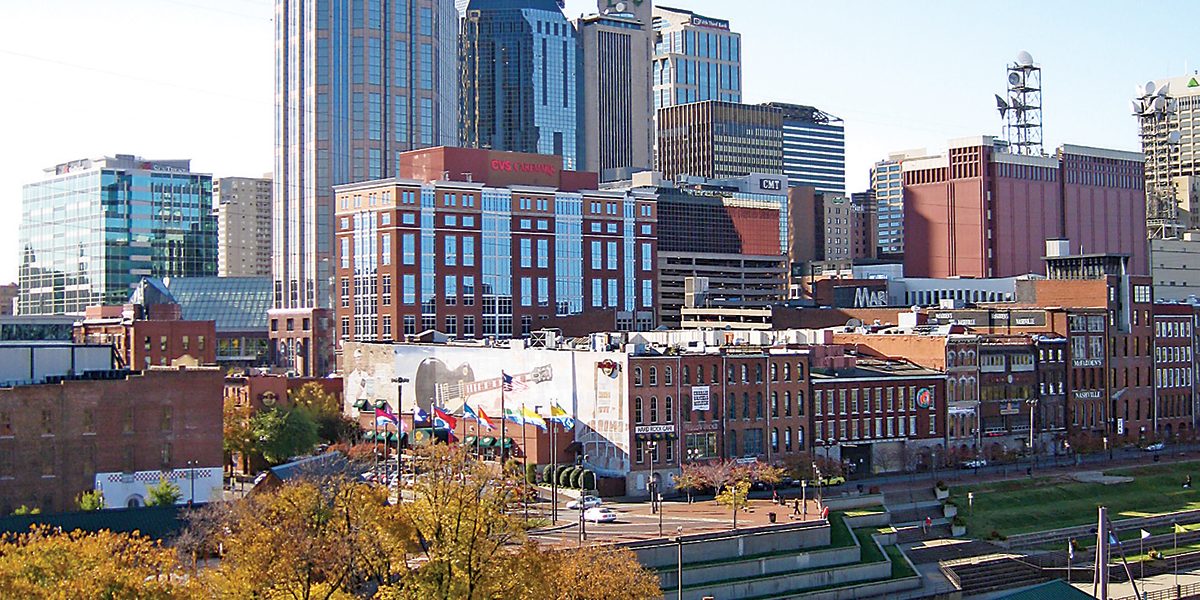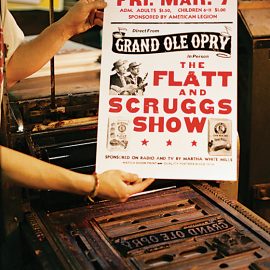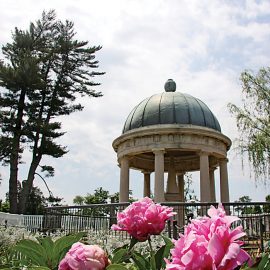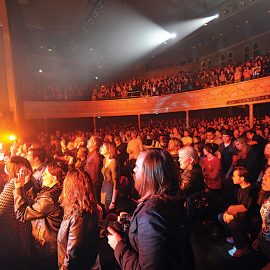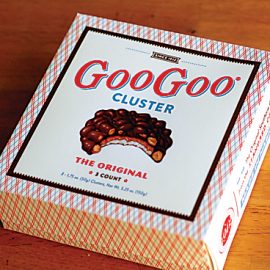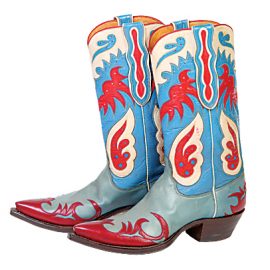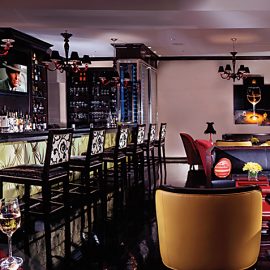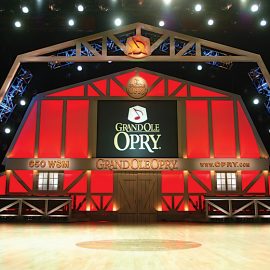Travel & Outdoors
Nashville Skyline
The Tennessee capital lives up to its “Music City” moniker—and more.
Nashville is America’s premiere music destination. Sure, other
cities have venerable musical traditions of their own, but you could
make the argument that none offers the breadth and depth of
Nashville’s. Music is the city’s lifeblood, its cultural and economic
engine.
It is impossible to walk more than a block without passing a concert
venue, a busker, a record store, a recording studio, or some other
satellite body orbiting the music-business mother star. Country is
king, obviously, but there is room at the court for rock, pop, folk,
bluegrass, blues, hip-hop, jazz, and classical as well. So, yes, the
moniker “Music City” certainly applies, and if all Nashville had to
offer was—as famed songwriter Harlan Howard once described country
music—“three chords and the truth,” that would be enough to recommend
it.
Tennessee’s capital, though, contains so much more. Far from a
cultural backwater, Nashville is an urbane metropolis bursting with
vibrant neighborhoods, abundant history, eclectic dining options, and
deep wells of artistry, making its other nickname—“The Athens of the
South”—just as apt.
Last May, however, many of the city’s most storied landmarks were
threatened when the Cumberland River rose 52 feet, flooding much of the
central city where sites like the Grand Ole Opry, The Country Music
Hall of Fame and Museum, the State Capitol building, and LP Field, the
home of the NFL’s Tennessee Titans, are located.
Remarkably, less than a year after the disaster—and it was a
disaster, inflicting $2.3 billion worth of damage and killing 10
people—the downtown bears few traces of the deluge. “The silver lining
was watching Nashville’s citizens come together to help themselves,
their friends, their neighbors, and even complete strangers,” says
Butch Spyridon, president of the Nashville Convention & Visitors
Bureau.
Getting to Nashville from Baltimore is surprisingly easy, thanks to
Southwest’s daily nonstop service from BWI, which has round-trip fares
for about $250. Flights take less than two hours and, due to the
one-hour time differential between Eastern and Central Standard Times,
you land to find the clock has barely advanced while you’ve been in the
air. Use this “extra” time to check out one of several historic
attractions that ring the city.
Greater Nashville boasts numerous antebellum mansions. Among the
best of the bunch are Belle Meade Plantation (5025 Harding Pk.,
615-356-0501, www.bellemeadeplantation.com),
a Federal-style mansion once the epicenter of Tennessee’s Thoroughbred
horse-breeding industry, and Historic Croft Home, located on the
grounds of the Nashville Zoo at Grassmere (3777 Nolensville Pk.,
615-833-1534, www.nashvillezoo.org).
But if you only visit one, make it The Hermitage (4580 Rachel’s Ln., 615-889-2941, www.thehermitage.com),
the modest frontier-farm-turned-booming-cotton-plantation of our
seventh president, Andrew Jackson, and his wife Rachel. The National
Historic Landmark spans 1,120 acres and encompasses more than 40 points
of interest, the most noteworthy being the Jacksons’ 19th century
brick mansion (complete with original wallpaper, flooring, and
furniture) and the couple’s earlier log-cabin frontier home.
The museum gets extra points for its particularly detailed and
sensitive treatment of slavery. Artifacts, exhibit text, and an audio
tour that comes free with admission present the issue frankly, bringing
to life some of the men and women for whom The Hermitage was not a
home of their own choosing, but a home nonetheless.
From there, head into the city to get settled. Many hotels are
located downtown, close to the always-bustling honky-tonk district and
country-music sites. Convenient though they are, you will likely pay
extra for the proximity. More budget-conscious choices can be found in
Midtown, the neighborhood adjacent to Vanderbilt University and its
sprawling medical complex. Of course, Midtown also contains the pricey,
eco- and pet-friendly Hutton Hotel (1808 West End Ave., 615-340-9333,
www.huttonhotel.com),
whose sleek modernist décor and exemplary service scored it a spot on
Condé Nast Traveler’s 2010 Hot List and a three-week stay from Gwyneth
Paltrow when she was in town filming Country Strong.
Midtown is a good home base for excursions as it is a 10- to
15-minute walk from most major attractions. But before heading off in
any direction, fuel up at the unlikely Noshville (1918 Broadway,
615-329-NOSH, www.noshville.com).
An “authentic New York-style delicatessen,” Noshville offers a
something-for-everyone menu, plus deli and bakery counters, and a
pickle bar!
Walk off (some of) the calories on the way to The Parthenon (Centennial Park, 615-862-8431, www.nashville.gov/parthenon),
a full-scale replica of the ancient Greek temple and proof that
Nashville wasn’t kidding about that whole “Athens of the South” thing.
The edifice was built for the city’s 1897 Centennial Exhibition and
boasts a 42-foot statue of the goddess Athena and an air-conditioned
gallery of paintings by 19th- and 20th-century American
artists—something definitely lacking in the Grecian original.
Also worth a stop is the Frist Center for the Visual Arts (919 Broadway, 615-244-3340, www.fristcenter.org).
Housed in a monolithic, Art Deco former post office, the museum
contains no permanent collection, choosing instead to host a frequently
changing roster of touring exhibitions.
As day turns to night, make your way to what Nashvillians call The
District, where honky-tonks, pubs, and clubs stand shoulder-to-shoulder
on Broadway for five blocks leading down to the Cumberland River. Its
fame has turned the stretch into something of a tourist trap with a
Hard Rock Café and Jimmy Buffet’s Margaritaville Restaurant, but there
are still vestiges of a less commercial Nashville to be found in the
mix.
Stop by the Ernest Tubb Record Shop (417 Broadway, 615-255-7503, www.etrecordshop.com),
where everyone from Elvis Presley to Loretta Lynn once performed on
the shop’s small stage as part of the long-running Midnite Jamboree
radio show. The show no longer tapes in the shop—it moved to the Texas
Troubadour Theatre on nearby Music Valley Drive around 1994—but the
stage where the greats once stood remains.
Across the street is Gruhn Guitars (400 Broadway, 615-256-2033, www.gruhn.com),
where every guitar geek will want to spend hours poring over the
ever-changing inventory of vintage and new Gibson, Fender, Martin, and
Gretsch models, as well as basses, mandolins, banjos, and more. And
just down the block is the venerable Hatch Show Print (316 Broadway,
615-256-2805), one of the country’s oldest working letterpress shops.
Inside the humble storefront, you’ll find shelves stacked with concert
posters advertising long-ago shows by greats like Dolly Parton and Hank
Williams, all sporting the press’s often-imitated but never-duplicated
vintage block font and weathered color palette.
Live music spills out of every doorway in The District day and
night, so let your ear and intuition guide you when choosing a venue.
Do make sure to stop for a meal at Merchants (401 Broadway,
615-254-1892, www.merchantsrestaurant.com).
The restaurant recently underwent an overhaul and now offers a bistro
and bar downstairs and a white-tablecloth restaurant upstairs. The
menus are different, but both offer creative Southern comfort food like
a fried-green-tomato BLT and duck-fat-fried tater tots.
After a night in The District, you probably won’t be up with the
sun. That’s fine. Nashville has an easygoing cadence characteristic of
the South. Wake up to the day at Prime 108 (1001 Broadway,
615-620-5665, www.prime108.com),
an opulent steakhouse off the lobby of the swanky Union Station Hotel,
for a leisurely brunch featuring Bellinis, mimosas, steel-cut oatmeal,
and Low Country grits with veggies, shrimp, and andouille sausage.
Then, venture out to Nashville’s close-knit neighborhoods. Two, in
particular, are worth your time—The Gulch, a trendy urban center, and
East Nashville, a community of almost storybook quaintness.
As the first LEED-certified neighborhood in the South, The Gulch (www.nashvillegulch.com)
is on the vanguard of New Urbanism—the movement to bring people back
to cities from the suburbs by creating walkable mixed-use communities.
Condos, offices, retail, and restaurants have been opening at a steady
pace over the last 18 months, with more in the works. Current
highlights include the chic pizzeria Urban Flats (610 12th Ave. South,
615-254-0454, www.urbanflats.net);
Sweet Cece’s Frozen Yogurt & Treats (319 12th Ave. South,
615-891-2534, sweetceces.com), a soft-serve yogurt emporium with
plentiful topping options; and Whiskey Kitchen (118 12th Ave. South,
615-254-3029, www.whiskeykitchen.com),
a hip restaurant with a serious whiskey menu that attracts native
celebs like Reese Witherspoon and the rock band Kings of Leon. But for a
quick and relatively inexpensive bite, swing by The Turnip Truck Urban
Fare (321 12th Ave. South, 615-248-2000, www.theturniptruck.com),
an organic and locally sourced grocer with excellent hot and cold
lunch bars featuring creative dishes for vegetarians and meat eaters
alike.
When it comes to food, you’ll soon find out that the city’s “meat
and three” restaurants are to Nashville what crabhouses are to
Baltimore, meaning there are a lot of them and each inspires fierce
devotion in its patrons. A meat-and-three-meal is just like it sounds.
Diners order a meat option (usually baked or fried chicken—or fish—but
it can also be meatloaf, pork, or beef) and then select three
vegetable sides ranging from coleslaw to mashed potatoes.
Traditionally, cornbread is included, as well. Nashville abounds with
places offering this Southern dietary staple, but we recommend The Pie
Wagon (1302 Division St., 615-256-5893, www.thepiewagon.com), a family-run cafeteria-style restaurant between Music Row and The Gulch that has been in business since 1922.
Across the Cumberland River from downtown, East Nashville is a
coalition of historic neighborhoods, all in various stages of
gentrification. Although some contain sleek, new eco-friendly
dwellings, most of the housing stock consists of Victorian cottages and
Craftsman-style bungalows accented by flowering trees and
picket-fenced yards. Grab a gourmet hot dog from I Dream of Weenie
(1106 Woodland St., 615-226-2622)—a yellow VW-van-turned foodstand—and
wander the streets, stopping at the area’s many independently owned
boutiques and cafes along the way.
Sunday is the time to attend one of Nashville’s many houses of
worship. By that we mean the holy trinity of country music shrines: The
Country Music Hall of Fame and Museum, Ryman Auditorium, and the Grand
Ole Opry. Both the Ryman (116 5th Ave. North, 615-889-3060, www.ryman.com) and The Country Music Hall of Fame and Museum (222 5th Ave. South, 615-416-2001, www.countrymusichalloffame.org)
are downtown, so start there. Allot significant time for the Hall of
Fame since it encompasses three floors of galleries, which include
Elvis’s gold-plated 1960 Cadillac, Mother Maybelle Carter’s 1928 Gibson
L-5 guitar, and an epic special exhibit chronicling the Williams
family’s tumultuous life and musical legacy. For an extra $12.99, you
can add a tour of Historic RCA Studio B on nearby Music Row, which is
still the epicenter of the music business in Nashville. A shuttle bus
departs regularly from the museum for the unassuming studio, where
everyone from Waylon Jennings to Elvis Presley cut hit records, earning
it the nickname “Home of 1,000 Hits.”
The Ryman feels sacred because it is. Originally built as a church,
the venue began hosting the Grand Ole Opry—the world’s longest-running
radio show and the launching pad for dozens of country greats—in 1943,
thereby becoming the “Mother Church of Country Music.” Backstage at the
Ryman is where Johnny Cash first met June Carter and where legends
like Patsy Cline and Porter Wagoner fretted in the wings before their
performances. Visitors can experience a taste of the limelight by
getting their pictures taken on the stage or—for an extra
$15-25—recording one of 12 classic songs, ranging from “Amazing Grace”
to Kenny Chesney’s “No Shoes, No Shirt, No Problem” in the Ryman’s own
recording studio. Best of all, the Ryman still hosts more than 200
shows a year.
In 1974, the Opry moved across the river to shiny new digs on the
outskirts of town. The new Grand Ole Opry House (2804 Opryland Dr.,
615-871-OPRY, www.opry.com)
may not have the old-timey charm of the Ryman, but it has a history
all its own. That past was jeopardized during the spring 2010 flooding,
when a levee was breached and floodwaters filled the theatre and
adjoining hotel.
Most distressingly, the circle of oak flooring that had been cut
from the Ryman’s stage and installed at the new Opry as a symbol of
continuity was feared damaged beyond repair. But tradition is
everything in country music, and Nashville wasn’t about to let a little
water get in the way of an 80-plus-year-ritual. In a neat bit of
reciprocity, Grand Ole Opry tapings relocated back to the Ryman until
repairs were finished in September 2010.
Currently, tours of the backstage area are again available most
days, and the stage hosts performances a few nights a week. The lineup
for May and June already includes Dierks Bentley, Oak Ridge Boys, and
Lady Antebellum, proving that country music endures.
And the circle remains unbroken.
